Saturday, August 11, 2018
The Bruce Trail has many side trails which form little loops along the way, especially in The Toronto Section where side trails account for 60 kilometres compared to only 50 kilometres of main trail. This makes for a nice change of scenery if you are doing a one car, return hike. We set out to hike from the parking place on the Sixth Line, north of 22nd Side Road, into Limehouse and back doing the Ridge Side Trail and Todd Bardes Meadowland Side Trail along the way. A severe limitation to the Bruce Trail App in combination with my iPhone is the extreme drain on the battery. I was forced to switch it off after only 8 kilometres because the battery was down to 1%. I have since learned that using airplane mode and low power can help resolve this if I want to map hikes for the sake of a blog.

The trail starts off along a beautiful boardwalk through the woods which were surprisingly free of mosquitoes on this morning. There was also a stillness to the woods as the birds were quiet. The trail leads almost directly from the sixth line to the fifth where you are forced onto the road for half kilometre or so.
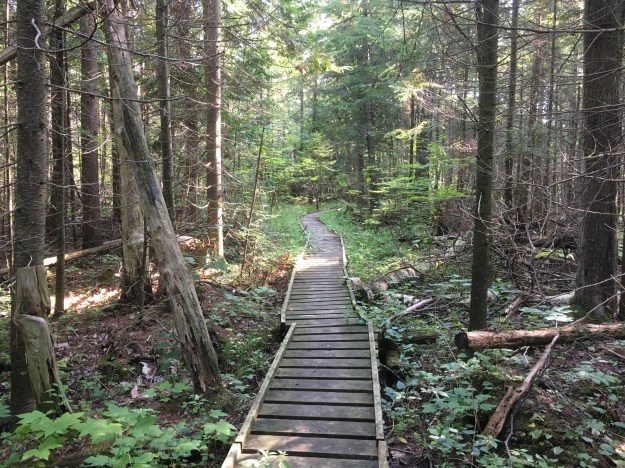
Hemlock Varnish Shelf is growing along this fallen tree. This fungus starts off as a small red nub on the side of the tree and grows into the familiar conk shape. When it is young it has a brighter red colour and a varnished look to it. The outer edges will be yellow or white but as it ages over the summer it changes to a more even rusty colour extending to the edges. These fungi are known as polypores because they have multiple small tubes or pores on the underside of the fruit body that release the spores. This group of fungi is key to the breaking down of wood and are key in the nutrient cycle of the forest. Polypores are often used in traditional medicine and science is studying the Hemlock Varnish Shelf for potential uses in cancer therapy.
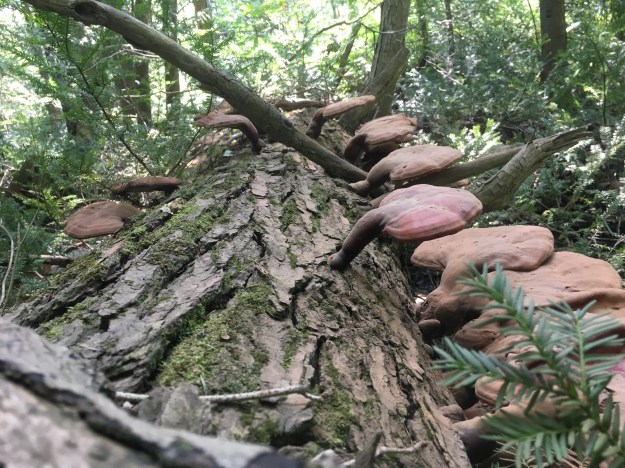
As this hike progressed it became obvious that there was an extremely large variety of mushrooms growing along the trail. Every time we hike there is always something interesting and unique about the area we’ve selected. This time it turned out be the fascinating colours and forms of the fungi we encountered. Giant puffballs grow along the trail in several places and are one of the prized edible mushrooms. They grow from August to September and can grow to 20 inches or bigger. They can be pan fried or battered and fried in slices. The spores form inside the mature ball and are released in a “puff” when the skin cracks at maturity.

As the puff balls mature they turn yellow and the skin cracks to release the spores. The inside turns from white to grey or dark yellow of the puffball spores. It has been estimated that an average size puff ball can contain up to 7 trillion spores.
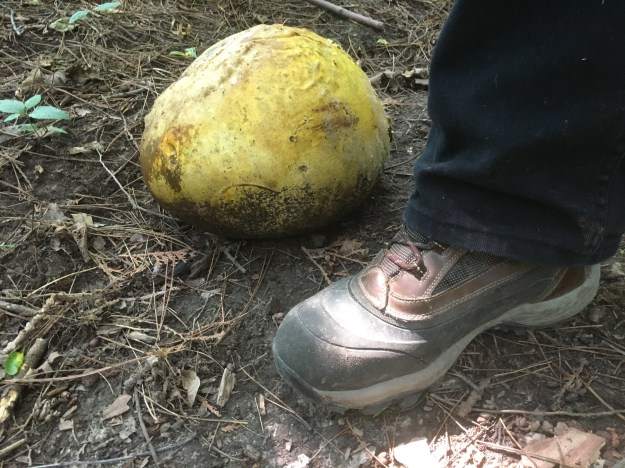
Oyster Mushrooms are considered to be one of the choice edible ones. They need to be collected when they are young before the flesh becomes tough and woody. Many Asian cultures use them extensively in cooking and they are cultivated in parts of India.

There were several places where Scarlet Fading Waxy Cap mushrooms were growing. As this mushroom matures the scarlet fades to orange or yellow. The cap is deeply convex with an incurved margin. It is one of the edible mushrooms however it is reported to be flavourless so it may be best used in a soup or chili.

Several types of artificial bee habitats have been set up in places along the trail. These ones are known as mason bee tubes. This type of bee habitat can be a fun home project to make as a way to encourage the survival of the honey bee.
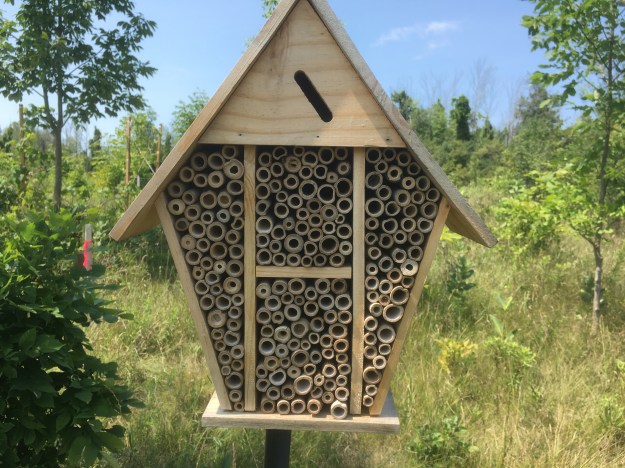
The bees still seem to prefer their own handy work in building their nests but the similarities to the mason tubes is interesting.
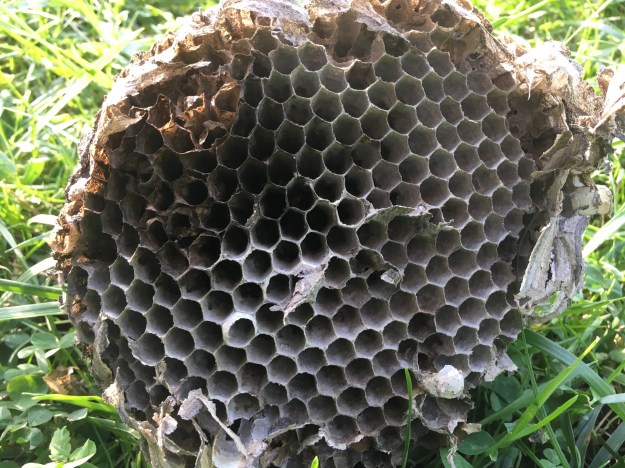
A good example of a mushroom that may be edible or may be a poisonous one is seen below. If this is a Jack O-Lantern it is poisonous but because it is growing singular instead of in a cluster it is likely a Chanterelle which is edible. Either way, the gills under the cap make this an interesting looking mushroom.

The Yellowish-White Melanoleuca is also an edible mushroom but there is a very similar mushroom that is poisonous. The Entoloma species look almost identical but have very different spores that allow them to be distinguished. Due to the fact that so many mushrooms have look-a-likes that are poisonous you should either be very sure of your identification or leave the plant alone.

Having reached Limehouse, where a large collection of 19th century lime kilns are preserved we made our way back to the car.
Google Maps Link: Bruce Trail Limehouse
Like us at http://www.facebook.com/hikingthegta
Follow us at http://www.hikingthegta.com
